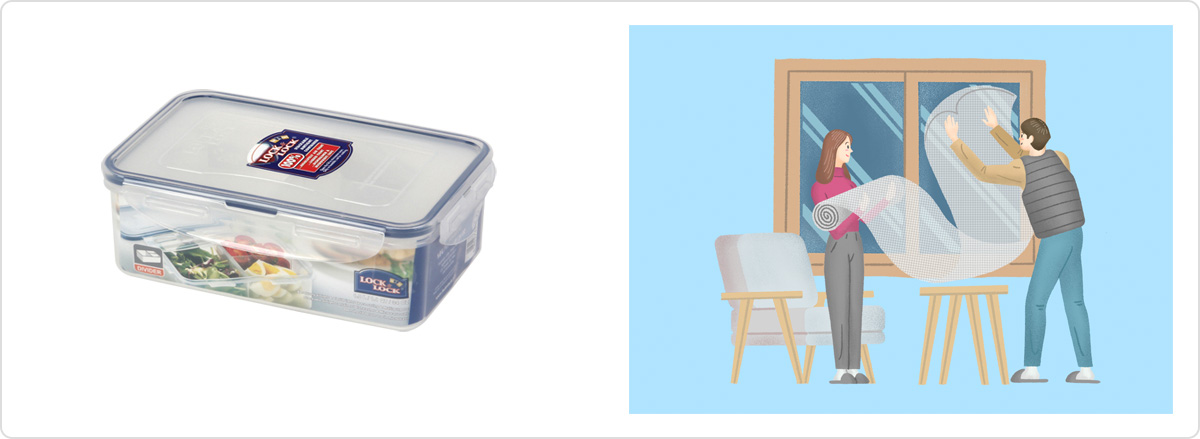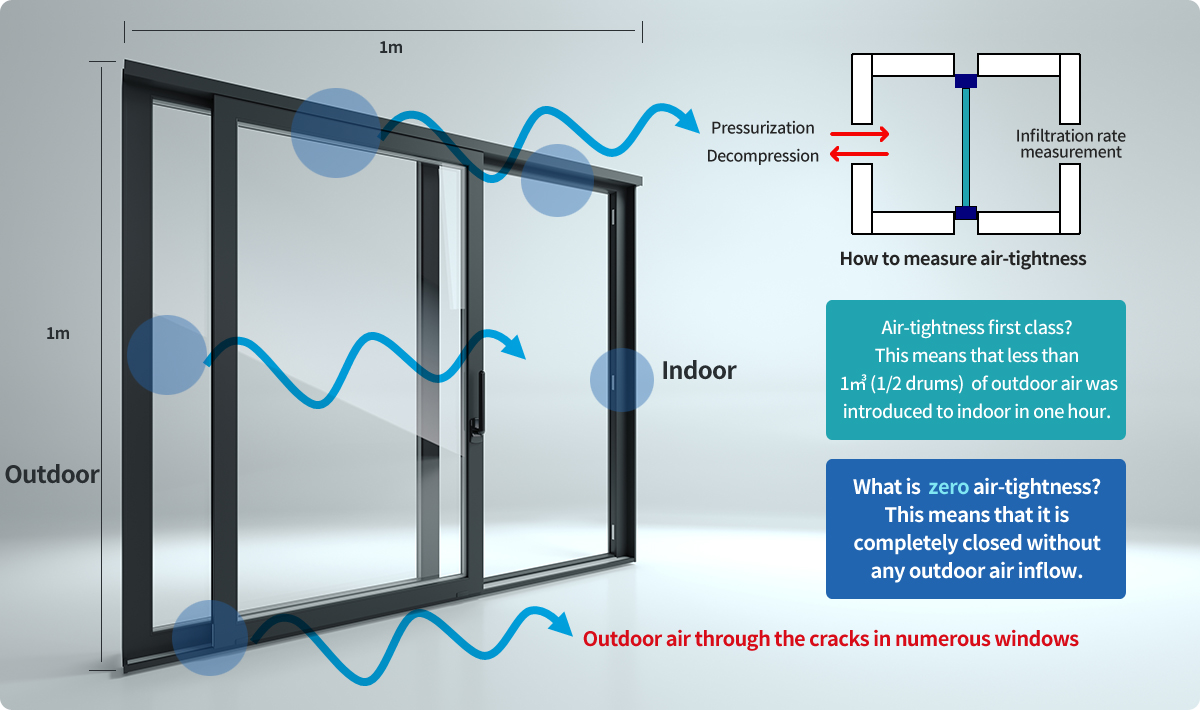Safety Window for Health
Are you unfamiliar with the term air-tightness?
Why do you prefer high-priced Lock and Lock containers? Yes, that's probably because of the belief in the highest level of airtightness, right?
In general, when moving the door, there is even a inevitable gap on the bottom and top of the window. The air-tightness is a numerical representation of how much outside air flows into the room through these gaps. It's a measure of how well the seal is.
Air-Tightness?

Typically, airtight performance is displayed in 1 hour (㎥/㎡·h) when 1㎡ of windows are installed.
However, the current energy consumption efficiency rating system does not allow consumers to compare and verify accurate performance as it is simply rated. This is something that needs to be improved compared to advanced countries where legal figures are correctly displayed.

This means that 1㎥ (1/2 drums) of outside air is introduced into the room with 1㎡ of windows.
For example, if the winter indoor temperature is 25°C and the outside temperature is -10°C in winter, air at -10°C will enter the room as much as 1㎥ and in order to maintain the indoor temperature at 25°C, energy must be continuously supplied to the room until the air at -10°C reaches 25°C.
This means that if the window area is 1㎡, and the window area of 1,155㎡ apartment is 30㎡, you will need to continuously supply more energy. In other words, fine dust enters the room as much as 30㎥.The lower the level, the lower the amount of air inflow, so please understand that installing the airtight "0" window will not only save energy but also help your health, especially in areas with elderly and young children who are vulnerable to fine dust.
Homepack is a new concept of sliding system that has the highest air-tightness of '0' to realize zero wind,
zero fine dust, zero pollutants, and zero insects.

